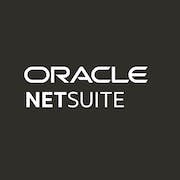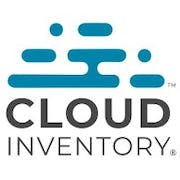Looking for the best distribution software? Check out our comprehensive buyers guide for expert insights on key features, and benefits to help you make an informed decision and streamline your operations today.
Searching for the right distribution software can be a daunting task, but don't let that stop you from taking the next steps to streamline your operations and maximize profits. A great distribution solution can make all the difference in ensuring that your business runs efficiently, providing automation and increasing productivity. When it comes to selecting the right one, it's important to consider a wide range of critical factors and in this buyer's guide, we'll dive into some of the key components that you need to understand before making that decision. Whether you're a small or large business, this guide will provide you with the necessary information to make an informed choice and ultimately get the most out of your investment.
What is distribution software?
This is a computer application that helps businesses manage their inventory levels, track sales and deliveries, and handle returns. It is a crucial tool for companies that stock or sell physical products. Here are some of its common use cases:
- Inventory management: Distribution software enables companies to track their inventory levels in real-time, so they can reorder products before they run out of stock. It can also help businesses optimize their inventory systems for better efficiency.
- Sales tracking: By monitoring sales data, it can show businesses which products are selling well and which are performing poorly. This information can help companies make more informed decisions around product development and marketing.
- Delivery management: With distribution technology, companies can track their deliveries and make sure they arrive on time. The software can also help businesses plan delivery routes for more efficient logistics.
- Returns management: Any returned products can be tracked and managed with a distribution tool, which allows businesses to analyze what's driving customers to return their products and identify potential solutions.
Many types of companies use this solution, including manufacturers, wholesalers, distributors, and retailers. It's especially helpful for businesses that handle large volumes of inventory or have complex supply chains.
What are the benefits of utilizing a distribution solution?
Businesses need to stay ahead of the competition. One way to achieve this is by making use of a distribution system. This powerful tool is a must-have because it comes with a wide variety of advantages which include:
- Increased efficiency: With distribution technology, businesses can automate and optimize their supply chain operations. This means that companies can do more with fewer resources while maintaining a high level of efficiency.
- Improved transparency: A distribution management system provides real-time data on inventory levels, orders, shipments, and deliveries. This increased visibility helps businesses make informed decisions, prevent stockouts, and avoid overstocking.
- Enhanced customer experience: It enables businesses to quickly respond to customer demand and provide accurate delivery estimates. This results in better customer satisfaction and loyalty.
- Cost savings: By automating and optimizing supply chain operations, businesses can reduce labor costs and avoid wastage. Additionally, distribution software can help negotiate better pricing with vendors and reduce transportation costs.
- Scalability: As businesses grow and expand, so does their supply chain. A distribution program provides the flexibility and adaptability that businesses need to scale their operations and handle growing demand.
10 key features of distribution software
Distribution management systems offer a range of features which make it a valuable investment. Here are the 10 common ones to look out for:
1. Inventory management:
It tracks inventory levels to ensure that you never run out of stock.
2. Order management:
Businesses are able to manage incoming orders, assign tasks to your team, and streamline the fulfillment process, making use of this platform.
3. Warehouse management:
It offers a function to receive inventory, manage storage and picking, and streamline logistics.
4. Shipping management:
Businesses can manage shipping costs and track shipments in real-time.
5. Reporting and analytics:
It can enable you to access real-time data to make informed decisions about your business.
6. Customer management:
This feature allows managing of customer profiles, tracking communications and orders, and delivering personalized service.
7. Accounting integrations:
It seamlessly integrates with popular accounting platforms like QuickBooks to streamline your finances.
8. Compliance management:
A distribution platform ensures compliance with local regulations and industry standards.
9. Scalability:
It can easily scale your operations to handle increased demand as your business grows.
10. Mobility:
Businesses are able to work on the go with mobile access to your distribution solution, even when you're away from your desk.
Things to consider when investing in a distribution platform
When purchasing a distribution package, there are several key factors that businesses should consider to ensure that the tool meets their unique business needs. To pick the right one look out for these aspects:
- Business requirements: The first step is to define your business requirements. Identify the specific functions and features your business needs from a distribution software system. This includes inventory management, order processing, and shipping.
- Scalability: It is important to choose a solution that is scalable. Whether your business is expanding or simply experiencing seasonal fluctuations, the application you select should be able to keep up.
- Flexibility: A distribution software solution should be able to adapt to the way your business works, rather than forcing your business to adapt to it. Look for one that is customizable and configurable to meet your unique business needs.
- Integration: Choose one that can integrate with other business software your company may be using. Integration is key to achieving full visibility across your entire business, from accounting to CRM.
- User-friendliness: A user-friendly interface is essential for increasing adoption and minimizing training for new hires. Look for a tool that has intuitive navigation and is easy to use.
- Data analysis and reporting capabilities: It should provide you with visibility into your business processes, allowing you to make informed decisions. Look for software that provides real-time data analysis and reporting capabilities.
- Customer support: It is important to choose one that has a strong customer support team. This will ensure that any issues or questions are addressed in a timely manner.
Industry trends for distribution software
The world of distribution technology is an ever-evolving one, and staying up to date with the latest trends is crucial for businesses looking to remain competitive this year and beyond. This market is projected to reach around $19.8 billion by 2025, experiencing significant growth.
Here are some of the most significant trends to look out for:
#1. Cloud-based distribution software
The rise of cloud-based apps has revolutionized the way businesses operate. In 2024 and beyond, more and more distribution software will be cloud-based, providing greater flexibility, accessibility, and security.
#2. Artificial intelligence and machine learning
AI and machine learning are powerful tools for businesses looking to streamline their operations and improve their bottom line. In the coming years, we can expect to see more distribution software incorporating these advanced technologies.
#3. Mobile optimization
With more and more people using mobile devices to access the internet, it's crucial that a distribution system be optimized for mobile platforms. This will allow businesses to stay connected on-the-go and access the information they need, wherever they are.
#4. Data analytics
The ability to collect and analyze data is essential for businesses looking to make informed decisions. A system that incorporates advanced data analytics tools will be in high demand in the near future.
#5. Cybersecurity
As cyber threats continue to evolve, businesses must ensure that their software is secure and protected against potential attacks. In the coming years, we can expect to see distribution software that places a greater emphasis on cybersecurity and data protection.
By staying up to date with these trends, businesses can ensure they have the tools and capabilities they need to succeed.
Conclusion
To conclude, selecting and implementing distribution software is a crucial step for optimizing supply chain operations, improving inventory management, and enhancing overall business efficiency. Successful deployment and ongoing maintenance of this technology requires thorough planning, staff training, and continuous monitoring to ensure the system adapts to evolving market demands and technological advancements. Ultimately, the right program can lead to significant cost savings, improved customer satisfaction, and a stronger competitive edge in the marketplace.







